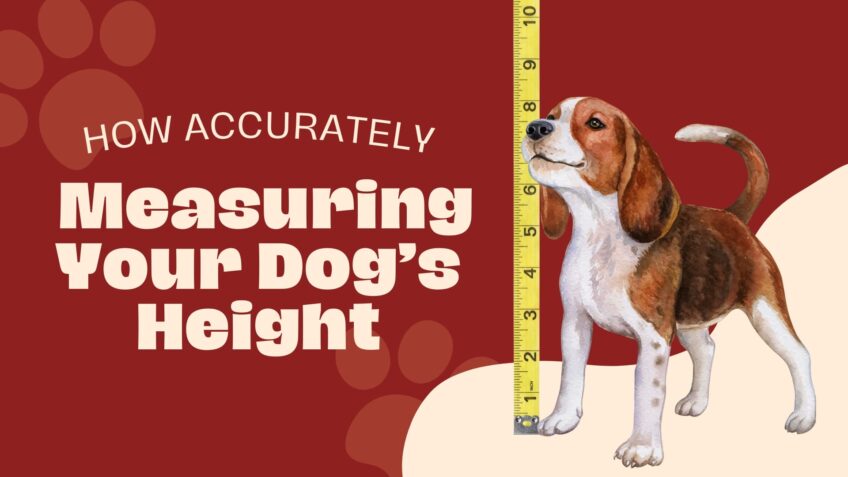Dogs come in all shapes and sizes, and measuring your dog’s height is an important part of understanding its overall health and well-being. Knowing your dog’s height can help you determine if they are a healthy weight for their size, find the right size crate or dog bed, and select the appropriate size harness or collar.
Measuring your dog’s height may seem like a simple task, but it’s important to do it correctly to get an accurate measurement. In this article, we’ll explore the different methods for measuring your dog’s height, including tips and tricks to ensure you get an accurate measurement every time.
Understanding Dog Height

Measuring a dog’s height is an important part of a pet health and wellness plan. Knowing your dog’s height helps you identify if they are the correct weight and size and if they fall into a healthy range.
To accurately measure your pup’s height and length, here are two methods:
Using a measuring tape: Measure your pup beginning at its paws, then pull the tape snugly upward over its shoulder blades and hindquarters down to the base of its tail till you reach its tip. Don’t forget to straighten out any unruly fur! This will allow you to obtain both your dog’s height and approximate length measurements in one go.
Using everyday objects: You can also use objects around your house as a way to get an estimate of how tall or long your furry companion is. Objects such as books or rulers make for good temporary items; simply line them up against 2 parts – beginning from their shoulder blades down to the base of their tail – making sure that they are all aligned for accuracy before taking note of whatever measurement you have obtained with these objects combined together in line with each other!
Learn the different measurements used
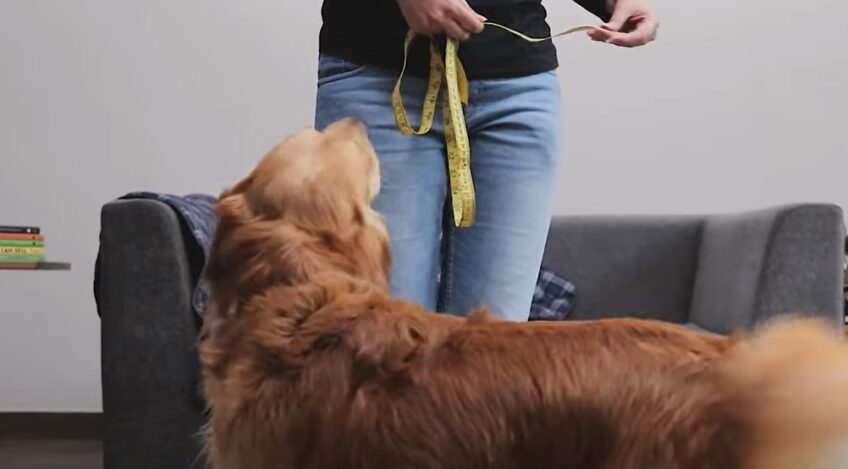
Whether you’re selecting a breed, comparing it with other dogs, or just curious, learning how to measure your dog’s height can provide valuable information. Understanding the key measurements used when measuring a dog’s height is essential to ensure an accurate and consistent result.
Measured from the floor to the top of the shoulders (or withers), his height and weight are important considerations for everything from feeding portions to judging in shows and even selecting housing size.
Here are three major measurements used when determining canine height:
- Standard/Official Height: This is calculated based on an exact point at the top of your dog’s shoulder blades where you measure down vertically to a flat surface.
- Real Height: This is calculated by measuring from the withers (top of shoulder blades) point of your dog vertically down to their feet whilst standing on a level plane.
- Ideal Height: This refers to ideal breed measurements established by national kennel clubs and organizations and may not necessarily match up with individual dogs as growth can vary depending on genetics nutrition, health status, etc
By understanding these different measurements used when calculating canine height, you will be able to accurately reflect both your own dog’s size as well as those that constitute a selected breed standard — this information can be invaluable in terms of pet care and communication with vets and other professionals involved in animal care.
Measuring Dog Height
Measuring the height of your best friend can help you determine their age, choose the right size of crate, and select the right size of the food bowl. There are several different methods you can use to measure your dog’s height – some more accurate than others. Knowing the right way to measure your dog’s height can help ensure that you get an accurate measurement.
Let’s explore the different ways in which you can measure your dog’s height.
Measure your dog while standing
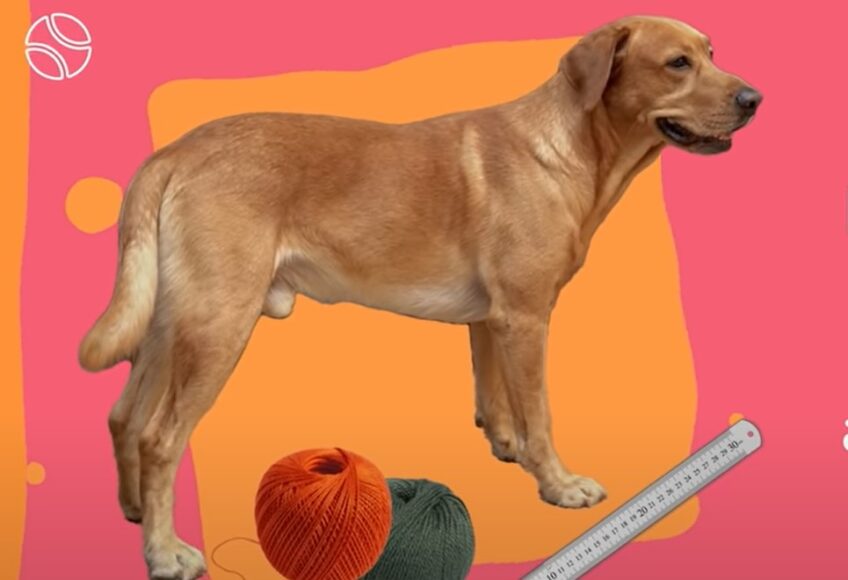
This is an important part of determining the appropriate size for items such as crates, clothes, and other items. To accurately measure your pet, you will need to stand them up on a flat surface. Make sure there’s enough space for them to stand completely straight with their feet close together. Be sure that the measuring device is placed against a wall if available, and that you start at the very top of the head until the bottom of the feet.
If it is uncooperative or will not stand still during this process, it is recommended that a friend or family member can hold them down in order to obtain a comfortable and accurate measurement. Most measuring devices are set up in inches/centimeters/millimeters but use whatever works best for you!
Once you’ve determined this number using the correct method, feel free to use this height measurement to choose what is best fitted for your pup’s size.
Measure your dog while lying down
The simplest and most direct way to measure the height of your dog is to measure from the ground to the highest point on their body, which is usually the shoulder level. It is important that you measure your dog while they are lying down in order for you to get an accurately measured height.
Start by having your dog lie down on a flat surface, such as concrete or flooring. Have them lay straight so that their head and feet are parallel with the surface they are lying on. Then, use a tape measure or ruler and check where their shoulders are in relation to the ground. The measurement should be taken from the highest point of the shoulder blade to the base. Just be sure that you do not hold or stretch out the tape too tightly, or else you will end up with an incorrect measurement.
When measuring, have someone hold your pup still so that they do not move around during this process while trying to be comfortable on its side. Once you have marked where their shoulders begin/end, you can then take out a measuring tape and determine what is the accurate height for your pup!
Use a measuring tape
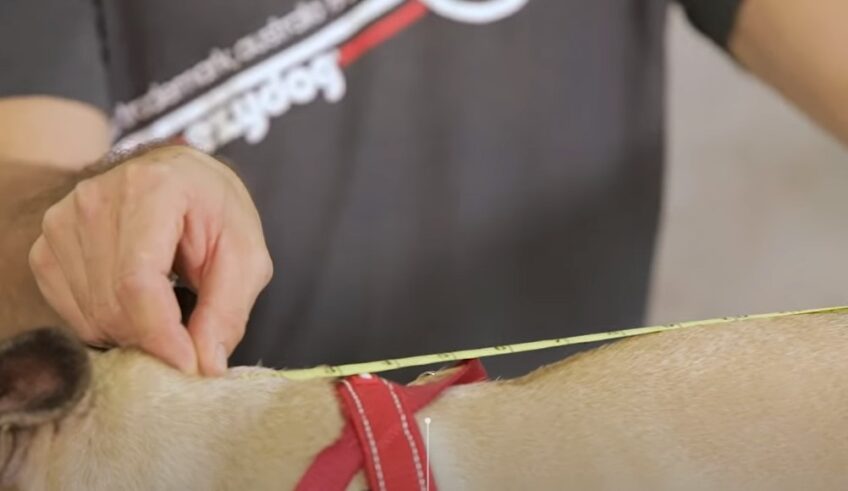
Knowing a dog’s height can help you choose the right size for items like crates, beds, and clothing, as well as provide essential information for agility and obedience competitions.
You will need a flexible measuring tape to measure your dog’s height accurately. Stand up your dog in his normal standing position and start measuring from the ground to the highest point on his head or the withers (the highest point of his back). Be sure to record all measurements directly onto paper, as accuracy is key in determining the dog’s actual height.
When taking measurements, make sure you ignore any fur when holding the measuring tape in place and that they are done while your pup is standing evenly on all fours with their neck held straight forward. Also remember that when determining your pup’s actual height, it is better to err on the higher side versus underestimating their true size based on only their obvious physical stature.
Record your dog’s height in inches
Recording it is an important part of tracking its health and development. Knowing how tall your pup is can be helpful for diagnosing any potential issues related to size, such as joint conditions or growth abnormalities. There are a few different methods you can use to measure your dog’s height at home, ensuring accurate and up-to-date records for your pup’s health profile.
To record your dog’s height in inches, you will need a hard surface (like a table or counter), a flexible measuring tape or ruler, and an assistant to help hold your dog steady while taking measurements. Begin by having the assistant stand your pup on the hard surface with their feet at shoulder width apart.
Carefully place the measuring tape horizontally along the floor, right in between the pads of their feet on the surface — be sure not to slip it up onto their feet while they are standing! Measure from floor level up to the top of their back/shoulders (not including their head), and write down this number to record their total height in inches.
Tips for measuring uncooperative dogs
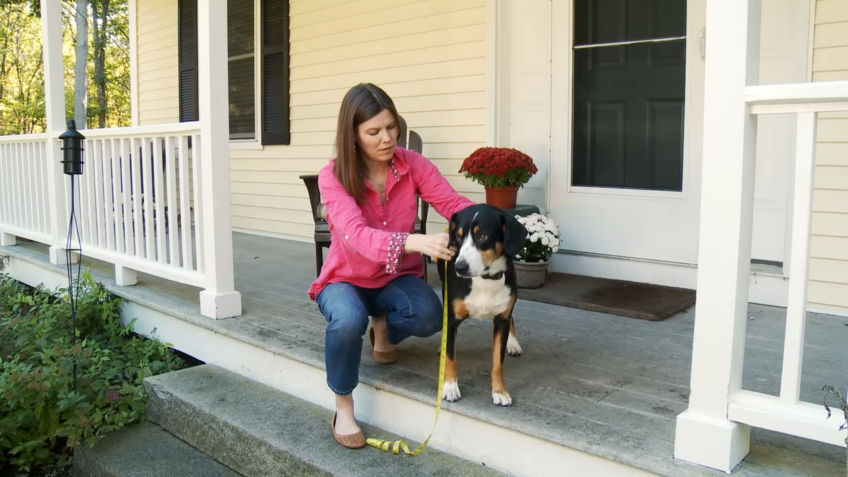
First, it’s important to create a calm and safe environment for your dog. Dogs can pick up on their owner’s energy, so it’s important to approach the measurement process in a calm and confident manner. Talk to your dog in a soothing voice and offer them treats or praise to help them relax.
Next, try distracting it with toys or treats. Give your pet a favorite toy or treat to keep them occupied while you take the measurement. Alternatively, you can have someone hold the toy or treat up in front of your dog to encourage them to stay still.
If your best friend is still uncooperative, consider breaking up the measurement process into smaller steps. For example, you can start by having your dog stand still for a few seconds and then reward them with a treat. Gradually increase the amount of time your dog is standing still until you are able to take the measurement.
Another option is to try measuring your pet while they are sleeping or relaxed. If he is comfortable and relaxed, you may be able to take a measurement without him even noticing.
Finally, it’s important to know when to stop. If your dog is becoming agitated or stressed, it’s best to stop the measurement process and try again later. Remember, your dog’s health and well-being are more important than getting an accurate measurement.
Other Considerations
There are a few other factors to consider aside from just the dog’s actual height. These could include the length of the legs, the size of the head, and the weight of the dog.
Knowing these details can help you get an even more accurate measure of your dog’s height. Let’s look into these and other considerations.
Consider the breed
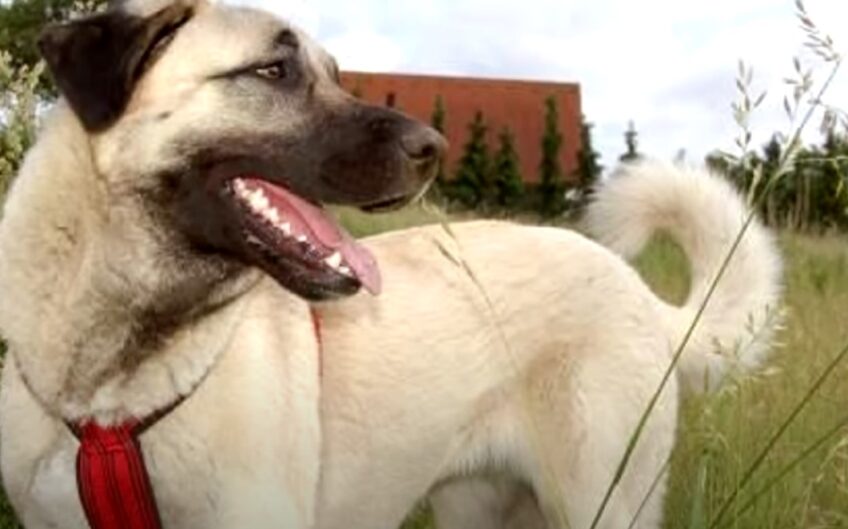
When measuring a dog’s height, it is important to consider the breed of the dog. Different breeds have different heights, so it is important to know which breed you are measuring before attempting to measure their height.
For example, larger breeds such as St. Bernard’s and Great Danes can range anywhere from 25-30 inches in height. Whereas, smaller breeds such as ShihTzus and Chihuahuas can range anywhere from 6–9 inches in height.
It is important to take into consideration the breed when taking measurements of a dog’s height in order to get an accurate result. Additionally, if you are measuring a cross-breed or a mutt it may be difficult to predict what their final adult size may be due to having traits from more than one breed.
Consider the age of the dog
When it comes to puppies, there is a lot that goes into their proper socialization and training process. Puppies require plenty of time for eating and napping as well as frequent trips outdoors for potty training purposes – usually about four times per day in the early weeks – meaning more time spent out with them at unpredictable hours may be necessary during your transition period together.
Short bursts of physical activity such as brief walks (15-20 minutes) can help curb unwanted behavior because active puppies are less likely to be destructive when bored or stressed out; so make sure you keep your pup moving!
Adults, on the other hand, tend to require less attention as they’ve often been previously trained by their owners before adoption. An adult dog offers stability due to its familiarity with routine activities such as taking long walks or going outside at certain times throughout the day and night. Adults will also respond better to instruction than puppies due to their increased mental maturity level; however, it’s still recommended that basic obedience lessons be taken after adoption in case there were any lapses in previous owners’ training before finding a new home with you!
Consider the size of the breed

It’s important to take into account the size of the breed. Smaller breeds may only measure up to a foot tall, while larger breeds like Great Danes and Saint Bernards can reach an impressive 40 inches or more.
Generally, smaller breeds measure from 8 to 15 inches at the shoulder from paw to ground and larger breeds may exceed 30 inches at the shoulder. However, variations among individual animals within a breed are common, so it’s best to use your own dog as a reference.
Additionally, still-growing puppies may not reach their full height for several months after birth. For this reason, it’s necessary to wait until a puppy is nearly full-grown before attempting any detailed measurement.
That being said, measuring puppies is still possible if done correctly — at each visit to your veterinarian, you can measure him against age-appropriate milestones of growth that are breed specific. This will help you get an idea of how tall your puppy will grow up to be without causing undue stress or pressure while they’re still growing and developing.
FAQs
How do I ensure that my dog is standing correctly when measuring their height?
To ensure that it is standing correctly, have them stand up straight with their head and neck extended and their legs positioned shoulder-width apart.
Is it necessary to measure my dog’s height if they are not competing in dog shows?
It is not necessary if they are not competing in them, but it can still be helpful for selecting appropriate equipment and tracking their growth and development.
What should I do if my dog is uncooperative during the height measurement process?
Try again later when they are more relaxed or seek assistance from another person to help hold it still.
What factors can affect my dog’s height measurement?
Factors that can affect include age, breed, sex, and overall health.
Can I measure my dog’s height if they have long fur?
Yes, you can even if they have long fur. Just make sure to part their fur to get an accurate measurement.
What should I do with the height measurements once I have taken them?
You can use them to select appropriate equipment and track their growth and development over time.
Conclusion
Measuring your dog’s height is an important part of understanding its overall health and well-being. Whether you’re selecting the right size equipment or tracking your dog’s growth and development, an accurate measurement is crucial. By using the appropriate tools, selecting the correct method for measuring, ensuring accuracy, and taking into account factors that can affect the measurement, you can get an accurate height measurement for your dog.
Additionally, if your dog is uncooperative during the process, there are several tips and tricks you can use to keep them calm and still. By following these tips, you can ensure that your dog is comfortable and relaxed during the measurement process. Remember, your dog’s health and well-being are the top priority, and taking the time to measure their height accurately can help you provide the best care possible.

